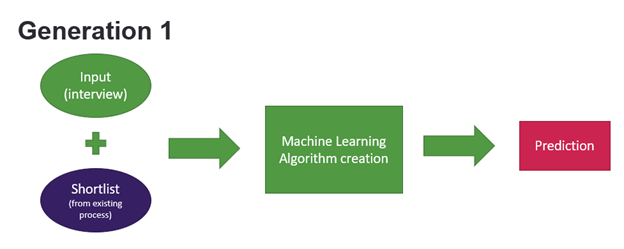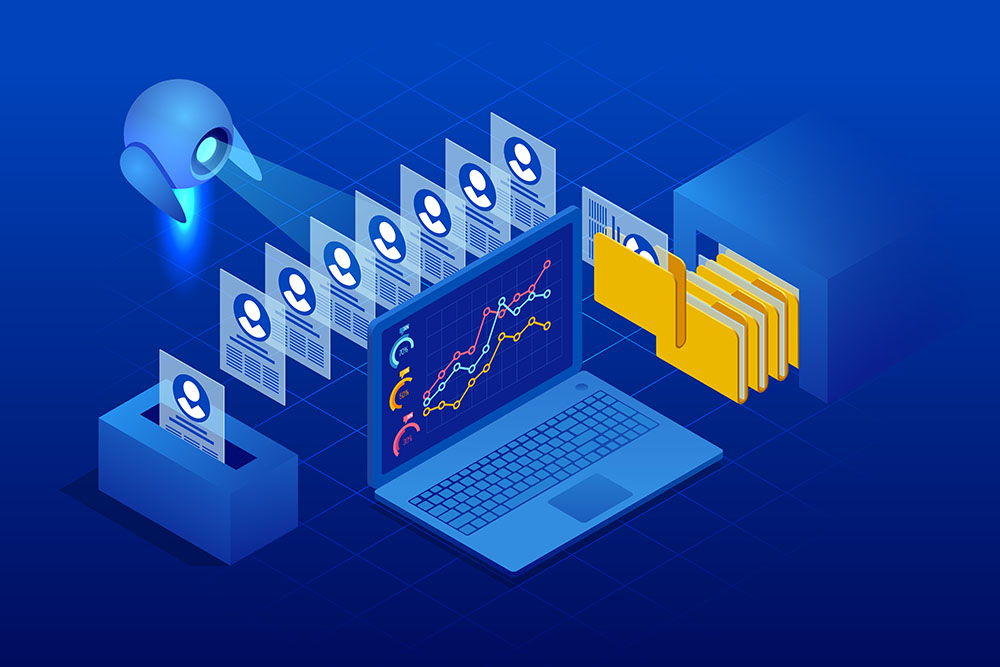The past year has seen major disruption in nearly every aspect of our work lives, and that disruption was perhaps felt the most in HR departments. With complicated COVID-related reopening measures, furloughs and layoffs, facilitating communication, reevaluations of benefits, and the current rehiring process, HR professionals have needed to alter their strategies and adopt a more agile, digital-first approach in the process.
One emerging technology, artificial intelligence (AI) and machine learning, has been instrumental in helping to streamline processes for HR departments, particularly in the hiring process. Though this new addition to the HR toolkit isn’t without controversy, it has the ability to create a more equitable and scalable hiring and candidate evaluation process that benefits all parties, including the candidates themselves.
It should be noted that AI is already integrated into certain aspects of the HR process, though it’s important to think about this AI as artificial intelligence 1.0. HR professionals can use chatbots and other basic machine learning structures to help prospective and new hires get answers to questions that require a basic back-and-forth communication. HR portals can incorporate questions for prospective candidates on benefits, employment policies, compensation, general questions about the position, and other “Level 1” support queries that can help save HR professionals’ time. This task automation is already a part of HR, helping to create an integrated approach to address all HR-related questions, both pre- and post-hire.
AI has gone beyond the realm of task automation, however, and is now being integrated into other more strategic facets of HR, namely the talent decision process. As companies begin restaffing with further reopening measures, AI can be a crucial component in streamlining the evaluation in the hiring process.
The Current State of AI in Candidate Evaluation
When we talk about AI and machine learning in candidate evaluation, it’s important to create a distinction between where we currently stand and where the industry is heading, as well as find commonalities between these two phases. Where we are now, AI is learned about and improved on based on historical behaviors. Where we’re headed will be more focused on the outcomes of a hire, which can truly unlock the potential of this technology to optimize workforces in the future.
At the start, it’s important to understand what we mean when we talk about AI and machine learning on a base level. It’s not common knowledge, but CAPTCHA represents a prime example of AI-powered learning. Picture an image array of fire hydrants; through a repetition of responses—a feedback loop from actual human respondents—a program can begin to understand patterns of recognition. So, going forward, future humans interacting with the same CAPTCHA parameters will select the same photos of fire hydrants. This human feedback loop reinforces the program, which can be used to authenticate future respondents.
Within the hiring process, AI can be used to track patterns in successful respondents; within recorded video interviews, hiring managers or recruiters can create baselines of responses they deem successful and use those data to optimize future ideal responses. Of course, this AI is only as good as the humans creating this feedback loop within the process. HR departments are an essential component to sorting out instances of bias and make the AI function as close to a human as possible.

When executed successfully, this human-led, AI-driven approach to candidate evaluation works for both HR professionals and candidates. Instead of qualified candidates’ application materials sitting at the bottom of a stack of 1,000 other applicants (as they currently do), AI can give HR departments the ability to accommodate large-scale hiring efforts without glossing over or frustrating qualified applicants.
Furthermore, when there are biases within AI—specifically with regard to race and gender—they can be excluded through analysis. The biases in human HR recruiters, however, will continue to exist; think of an HR professional favoring a candidate who went to the same college, for example. For the best results for this type of AI, it should rely on a diverse array of recruiters reviewing hundreds of candidate video responses, teaching the system and canceling out bias from the beginning, and then continually monitoring the program to ensure it remains unbiased.
The way HR can currently deploy AI within the hiring experience stack is certainly a scalable step forward to ensuring all candidates are evaluated, particularly for high-volume jobs. However, this AI is based on information that determines a successful hire, not necessarily a successful employee. The next frontier is the potential of AI to predict an employee’s outcome instead of replicating recruiter behavior.
Effective Ways to Set Up AI Within the Hiring Stack
When AI is leveraged in the hiring process, current methodology is primarily deployed to determine which candidate would be the best fit within a company based on past hiring. Yet we know from experience that the wrong people are hired all the time; we also know that the cost of hiring the wrong person can be substantial—conventional wisdom says it can cost 150% of an employee’s salary.
What if AI could be leveraged based on the parameters set by other employees who have demonstrated success in a position? Say after 3 months, for example, an employee has demonstrated aptitude for a position and has proven himself or herself to be a cultural and performance fit; AI can then be used to favor the traits that have been proven successful in that employee’s hiring.

While again, the applications for this brand of AI may work better for large-scale hiring efforts for high-volume, similar jobs, in the future, it will be able to be applied across many more specialized positions across multiple companies. Instead of a single-source employer testing its current employees against prospective ones, a plurality of HR professionals can amass data on successful traits of positions across entire industries, creating an AI-driven employee evaluation process that works for everyone.
The important thing to remember, however, is that AI needs constant auditing. Without ongoing oversight, it can fall victim to the same biases as humans or the unintended biases of machines. When deployed successfully, however, AI can streamline the candidate evaluation process at scale for employers while giving all candidates an equal opportunity.
Greg Moran is the President and CEO of Outmatch, the industry’s first and only hiring experience stack. Outmatch has composed a layer of assessments, video interviewing, and reference-checking that transforms existing applicant tracking systems (ATSs) and humanizes the hiring process at scale. Moran has more than 20 years of human capital management, sales, and leadership experience and is the author of Building the Talent Edge: A Field Managers Guide to Recruiting the Best (Spring 2005) and Hire, Fire and The Walking Dead (June 2006, W Business Books).
The post Artificial Intelligence in the Hiring Experience Stack Can Create Efficiency Without Bias appeared first on HR Daily Advisor.
